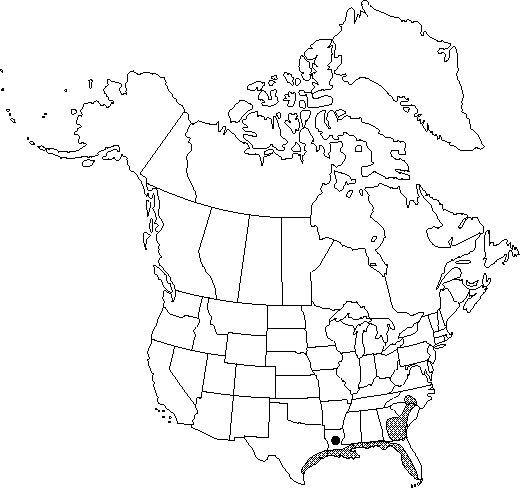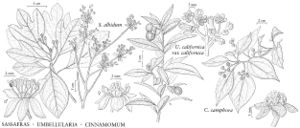Cinnamomum camphora
in F. Berchtold & J. S. Presl, Prir. Rostlin 2: 47. 1825.
Trees, to 15 m. Branches terete, glabrous, terminal and axillary buds covered by imbricate bracts, young twigs with clusters of scars from fallen bracts. Leaves alternate; petiole to 3 cm. Leaf blade ovate to elliptic or elliptic-lanceolate, with (1-)3 primary veins, 7-12 × 3-5 cm, base rounded to cuneate, apex sharply acute; surfaces glabrous except for pubescent domatia in axils of main lateral veins. Flowers: tepals greenish white, 1-2 mm, glabrous abaxially, pubescent adaxially; stamens arranged in outer whorl of 6 (actually 2 whorls of 3) and inner whorl of 3. Drupe to 9 mm diam. 2n = 24.
Phenology: Flowering spring (Apr–May).
Habitat: Moist subtropical areas, including the Gulf Coast
Elevation: 0-150 m
Distribution

Introduced; Ala., Miss., Fla., Ga., La., N.C., S.C., Tex., native, e Asia.
Discussion
Cinnamomum camphora is naturalized locally in the flora. Its crushed leaves have a strong smell of camphor. This species yields commercial camphor.
The name Cinnamomum camphora (Linnaeus) T. Nees & C. H. Ebermaier is nomenclaturally invalid.
Selected References
None.
